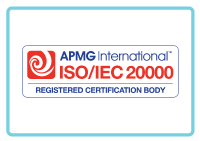- About Us Show more
- About Us Show more
-

- UNICERT offers quality value-added assessment services bringing consistency, optimisation and efficiency to improve clients’ management systems, with minimal disruption and cost to the operations.
- Find out more
-
- Services Show more
-

Certification
Formally confirming that your products and services meet all trusted external and internal standards.
Learn More
Inspection
Validating the specifications, value and safety of your raw materials, products and assets.
Learn More
Testing
Evaluating how your products and services meet and exceed quality, safety, sustainability and performance standards.
Learn More
Training
Equip your team with the vital training they need to remain at the top of their profession.
Learn More
-
- Services Show more
- Information Show more
- Information
Show more
-

- For more details of UNICERT and accreditation mark information please communicate by email: info@unicertglobal.com
-
- Standards & Industries Show more
- Contacts Show more
-
-
Global Reach
- UNICERT is the industry leader with many regions in the world. Whether your business is local or global, we can ensure your products meet quality, health, environmental, safety, and social accountability standards for virtually any market around the world.

-
-
- Worldwide Show more

PM10
UNICERT is the leading inspection body in the area of Air Quality test for Particulate Matter 10 (PM10) and its objectives are to reduce environmental emission/pollution and enhance environmental performance to the society.
Particulate Matter 10 (PM10):
PM10 is particulate matter 10 micrometers or less in diameter, By way of comparison, a human hair is about 100 micrometres, so roughly 40 fine particles could be placed on its width. Particles of any substances that are less than 10 micrometres diameter is known as PM10. Particles in this size range make up a large proportion of dust that can be drawn deep into the lungs. Larger particles tend to be trapped in the nose, mouth or throat.
The chemical properties vary depending on sources of particles. It is important to note that particulates are not one particular chemical substance but a classification of particles by size rather than chemical properties.
PM is a mixture with physical and chemical characteristics varying by location. Common chemical constituents of PM include sulfates, nitrates, ammonium, other inorganic ions such as ions of sodium, potassium, calcium, magnesium and chloride, organic and elemental carbon, crustal material, particle-bound water, metals (including cadmium, copper, nickel, vanadium and zinc) and polycyclic aromatic hydrocarbons (PAH). In addition, biological components such as allergens and microbial compounds are found in PM.
What are the effects of PM10 on human health?
PM10 and PM2.5 include inhalable particles that are small enough to penetrate the thoracic region of the respiratory system. The health effects of inhalable PM are well documented. They are due to exposure over both the short term (hours, days) and long term (months, years) and include:
- Respiratory and cardiovascular morbidity, such as aggravation of asthma, respiratory symptoms and an increase in hospital admissions;
- Mortality from cardiovascular and respiratory diseases and from lung cancer.
There is good evidence of the effects of short-term exposure to PM10 on respiratory health, but for mortality, and especially as a consequence of long-term exposure, PM2.5 is a stronger risk factor than the coarse part of PM10 (particles in the 2.5–10 µm range). All-cause daily mortality is estimated to increase by 0.2–0.6% per 10 µg/m3 of PM10 (6, 7). Long-term exposure to PM2.5 is associated with an increase in the long-term risk of cardiopulmonary mortality by 6–13% per 10 µg/m3 of PM2.5 (8–10).
Susceptible groups with pre-existing lung or heart disease, as well as elderly people and children, are particularly vulnerable.
For example, exposure to PM affects lung development in children, including reversible deficits in lung function as well as chronically reduced lung growth rate and a deficit in long-term lung function. There is no evidence of a safe level of exposure or a threshold below which no adverse health effects occur. The exposure is ubiquitous and involuntary, increasing the significance of this determinant of health
What are the environmental effects of PM10?
Particles such as soot are mainly responsible for staining buildings and objects made from stone. The effect of PM on vegetation depends in most cases on the chemical composition of particles. Heavy metals and toxic particles can cause damage and death to some species as a result of phytotoxicity and abrasive action during turbulent deposition. Heavy deposition loads can result in reduced light transmission to chloroplasts and the occlusion of stomata, decreasing efficiency of gas exchange. Physiological processes such as bud-break, pollination and light absorption can also be disrupted.
Interested Parties including Regulatory Authorities:
- Persons affected by PM10
- Industries, Laboratories using/ Generating PM10
- Warehouses Containing Chemicals of PM10
- Motor Vehicles for personal and commercial uses
- Private / Govt. Projects to control PM10
- Handling and transportation of chemical containing PM10
- Local Environmental Department/ Authorities
- Local Government Authorities like Municipalities, City Corporation etc.
- Local Law Enforcing Agencies like Police, Magistrate and Regulatory Authorities etc.
Benefits of Monitoring:
By monitoring long-term contamination trends, every country establishes baseline contamination levels, making it possible for early identification of contamination events. Daily events and long term trends are captured and steps taken to reduce environmental emission/ pollution and enhance environmental performance of the society.
INSPECTION
ACCREDITATION









Copyrights © 2020 All Rights Reserved.


